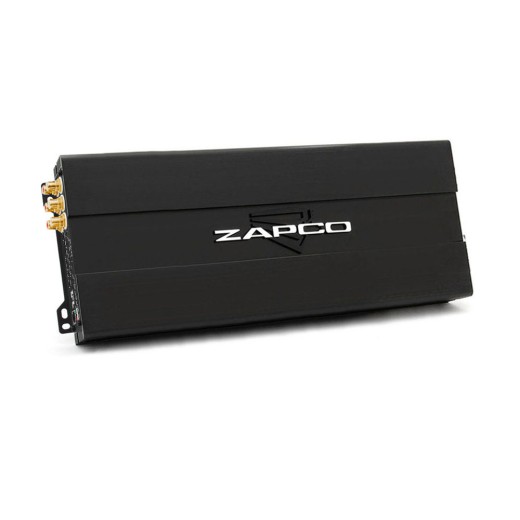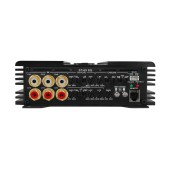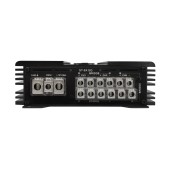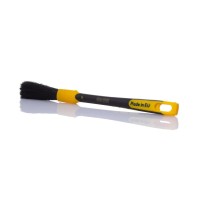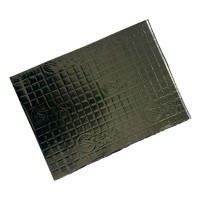Zapco ST-6X SQ amplifier
More about the product
Zapco ST-6X SQ amplifier
Zapco's Studio-X range of amplifiers has been designed specifically for today's car audio market. The Studio-X's compact chassis allows for easy installation in any car, and the modern square design in black makes the amplifiers look great in any installation. The Zapco ST-X SQ series amplifiers are created for customers who appreciate the finer elements of music and are willing to invest a little more in a "livelier" sound. Inside this amplifier focused on sound quality, you will find several improved components that contribute to significantly better performance of your favorite music. The SQ version will allow for a more open sound and a more accurate soundstage. The SQ amplifiers also use improved Tiffany-style RCA connectors for solid and consistent signal transmission.
The main features of the Zapco ST-6X SQ amplifier
- 4-channel class A/B amplifier
- Stable up to 2 Ω, in the bridge up to 4 Ω
- Tiffany RCA connectors
- RCA and OEM high-level inputs
- Continuous input power control
- Automatic switching thanks to the Auto Sense function
- FULL / HP / LP electronic crossover
- Socket input terminals
- Bass Boost
Important features of Zapco Studio-X amplifiers
In the Studio-X series you will find a total of fourteen amplifiers, including ten class A/B and four class D monoblocks. All of these amplifiers use the same bipolar output devices, op amps and high-end capacitors that are part of Zapco's higher model lines. Common features of Studio-X amplifiers include variable electronic HP/LP/Full Range crossovers, variable bass gain, variable gain by channel pair, high-level speaker input, powerful terminal blocks and preamplifier outputs for connecting an additional amplifier without the need to add additional RCA cables . Strengths include durability and reliability. It is not at all unusual to see Zapco amps being passed from car to car and generation to generation. Zapco amplifiers made in the 1990s are still traded and purchased online by audio quality enthusiasts around the world. The Studio-X series will be no different. And of course, the most important feature shared by all ST-X amplifiers is Zapco's legendary sound quality, developed with over 40 years of experience.
About Zapco Amplifiers
Zapco is the oldest high-end car audio brand in the world, specializing in high-end car amplifiers and DSP processors. The company was founded in the USA back in 1974 and has been collecting one award after another since then. And this both from prestigious organizations that evaluate the quality of products and innovations, as well as at global competitions focused mainly on sound quality. Zapco amplifiers represent audiophile quality without compromise, defining the standard of quality and setting the criteria by which other products in the industry are judged. At Zapco, for over 45 years, they have been constantly looking for innovative ways to bring better sound to the automotive environment, and this relentless pursuit of absolute sound quality has always resulted in new technologies and high-end products. Are you asking why? Because nothing else can capture the soul and bring tears to the eyes like music. Music can make you dance for joy..... of all the arts, music has the most powerful and immediate effect on your body and mind. Reproducing music in all its beauty and delicacy deserves nothing less than the best efforts of all Zapco employees. And also because music matters!
| Catalog number | ST-6X SQ |
| Brand | Zapco |
| Links | Official web presentation (English) |
